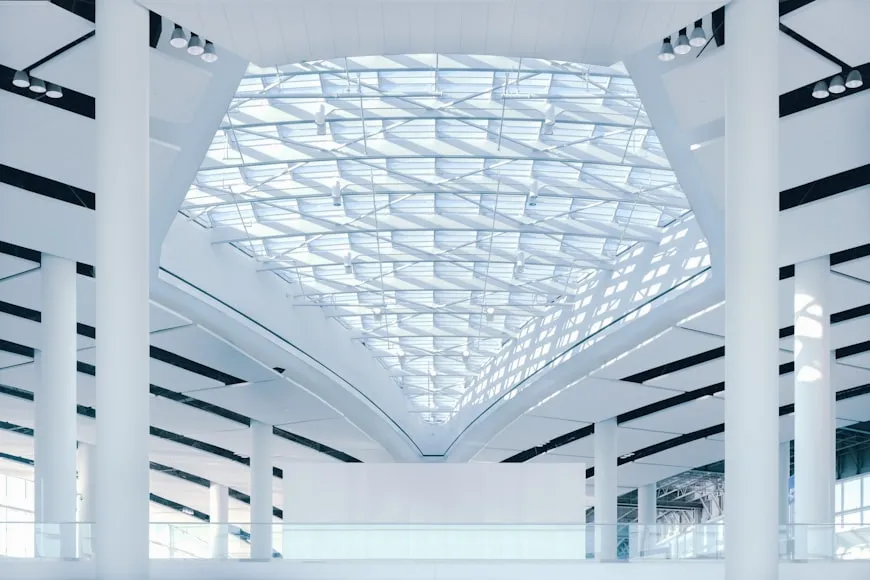
Image by Home, Craft, & Beauty Bliss on Pinterest
Table of Contents
Introduction
Are you thinking about giving your home or office a fresh look, interior architectural design might just be the key to making it happen. This approach goes beyond picking out pretty decor, it is about blending structure, functionality, and beauty to create spaces that truly work for you. You may be renovating a cozy apartment or a spacious family home, understanding interior architectural design can help you make smart choices that boost both comfort and value.
In simple terms, interior architectural design involves rethinking the bones of a room, like layouts, lighting, and materials, while tying in aesthetic touches. According to experts, this field is seeing a surge in popularity, with sustainable practices leading the way, over 43% of designers now prioritize eco-friendly elements in their projects. And if you are in Nigeria or inspired by global styles, incorporating local influences can add a unique cultural flair.
As we go through this post, we will break down the basics, compare it to related fields and spotlight Nigerian twists. Let’s get into it!
RELATED BLOGPOST
To renovate your space, consult Imprexi today, you can also check out our portfolio
What Is Interior Architectural Design?
At its core, it is the art and science of shaping indoor spaces to be both practical and visually appealing. Think of it as the bridge between full-on architecture and everyday decor. Professionals in this area focus on how a space flows, how light moves through it, and how materials come together to support daily life.
For instance, in a typical project, you might start with assessing the existing structure; walls, ceilings, and floors, and then layer in elements like built-in storage or custom lighting. This is not just about looks; it is about making sure the space is safe, efficient, and adaptable. Recent stats show that multifunctional designs are on the rise, especially post-2025 trends emphasizing wellness and sustainability.
If you are new to this, consider how interior architectural design can solve common issues, like turning a cramped room into an open, inviting area. It is all about balance, combining technical know-how with creative flair.
Key elements to remember: Structural integrity comes first, followed by aesthetic choices that enhance usability

Image by Its Overflowing on Pinterest
Interior Architecture vs Interior Design: Clearing Up the Confusion
A frequent query that comes up is on the topic of interior architecture vs interior design. The two overlap, yet they are far from identical. Let us unpack it in straightforward terms.
Interior architecture digs into the structural side, things like modifying walls, ensuring proper ventilation, and adhering to building codes. It is more technical and often requires knowledge of architecture principles. On the other hand, interior design leans toward the decorative aspects, such as selecting furniture, colors, and textiles to create a vibe.
- Focus areas for interior architecture: Layout planning, material selection for durability, and functional adaptations.
- Focus areas for interior design: Aesthetic harmony, decor choices, and personal style expression.
The main difference? Interior architecture might involve licensed professionals handling renovations that affect the building’s framework, while interior design can be more flexible and certification-optional in many places. Both are crucial for great spaces, but if your project involves major changes, interior architecture is your go-to.
In practice, these fields often overlap. For example, a project might start with architectural tweaks and end with design finishes. Understanding this helps you hire the right pros and avoid mix-ups.
To renovate your space, consult Imprexi today, you can also check out our portfolio
Exploring Architecture and Interior Designs
When we talk about architecture and interior designs, it is exciting to see how they merge. Architecture sets the foundation; the overall building shape and external features, while interior designs fill it with life.
In modern projects, this blend creates seamless experiences. Take contemporary homes where open-plan layouts (from architecture) pair with cozy furnishings (from interior designs). Trends in 2025 highlight earth tones and natural materials, making spaces feel grounded and inviting.
Why does this matter? It ensures your space is not just built well but also feels right. For businesses, like offices or retail spots, strong architecture interior design can improve productivity and customer appeal.
Pro tip: Always link external architecture cues, like window placements, with internal designs for better natural light and energy efficiency.
Nigerian Architectural Design: A Cultural Fusion
Now, let us spotlight Nigerian architectural design. It is a vibrant mix of tradition and modernity that can inspire any transformation.Traditional Nigerian styles, like Yoruba compounds with central courtyards, emphasize community and natural ventilation. Modern takes, such as works by imprexi, blend these with contemporary materials for eco-friendly results.
In urban areas like Lagos, you will see high-rises incorporating local motifs, like geometric patterns from Igbo vernacular architecture. This approach not only honors heritage but also addresses practical needs, like heat management in tropical climates.
If you are in Nigeria or drawing from it, consider elements like sustainable bamboo or recycled metals. Projects on ArchDaily showcase how Nigerian architectural design adapts colonial influences into fresh, functional spaces.
Highlight: Modular housing like AllSpace tackles housing challenges with solar-powered, low-cost designs rooted in African traditions.This cultural angle adds depth to interior architectural design, making spaces feel personal and connected.

Image by MEDIA CONCEPT : SOCIAL WARDROBE on Pinterest
Trends Shaping Interior Architectural Design in 2025
Looking ahead, 2025 trends in interior architectural design focus on personalization and sustainability. Bold colors like wine red and earth tones are big, creating cozy, impactful spaces.
Multifunctional furniture suits smaller homes, while material drenching; using one texture throughout, adds cohesion.
Wellness features, like natural light maximization and biophilic elements, promote health. In architecture and interior designs, soft curves replace sharp lines for a more organic feel.
For Nigerian architectural design, expect more fusion with global trends, like eco-materials in urban builds.
Stay ahead: Incorporate smart tech subtly for modern convenience without overwhelming the design.These shifts make interior architectural design more inclusive and forward-thinking.
Practical Tips for Your Own Space Transformation
Are you ready to apply interior architectural design at home? Start small.
- Assess your space: Measure rooms and note pain points, like poor lighting. Then, sketch basic layouts, AI tools can refine them.
- Choose materials wisely: opt for durable, sustainable options like reclaimed wood.
- For interior architecture vs interior design decisions, consult pros if structural changes are needed.
- Incorporate secondary ideas: Add Nigerian architectural design touches, like patterned textiles, for warmth.
- Budget tip: Prioritize high-impact areas, like kitchens or living rooms.
With these steps, you will create a space that is both stunning and functional.
Conclusion
Wrapping up, interior architectural design is your ticket to spaces that blend beauty, function, and personality. From understanding core differences like interior architecture vs interior design to embracing Nigerian architectural design influences, there is so much to explore. With 2025 trends, transforming your area has never been easier.
If this sparks ideas, why not contact Imprexi today to start your project!
Read more: Sustainable Nigeria Architecture Design: 2025 Trends
FAQ
1. What is interior architectural design?
Interior architectural design is the practice of designing and redesigning indoor spaces to blend functionality, structure, and aesthetics, often focusing on elements like layouts, materials, ventilation, and adaptive reuse of existing buildings to meet human needs.
2. What is the main difference between interior architecture and interior design?
Interior architecture focuses on structural and functional aspects, like layouts and building codes, while interior design emphasizes aesthetics, such as decor and color schemes.
3. How can AI help with interior architectural design?
AI tools generate quick visualizations, suggest layouts, and allow style experiments, saving time and helping you see options before committing.





2 Comments